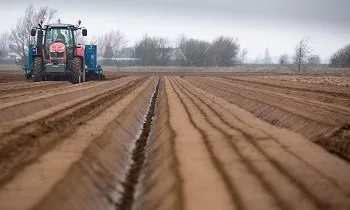
Author
| 1st December 20195 pointers to improving soil health without zero-tillage
Improving soil health is often linked with shifting to a zero-tillage system. Successful no-till farmers cite a number of benefits of opting for the system. These range from improved drainage and less compaction to greater soil biodiversity. But, no-till is not possible in all situations and is not the only way to improve soil health. In autumn 2019 attendees at the Bayer / Farmers Weekly Soil Roundtable discussed how farmers can boost the soil without leaving the cultivator permanently in the shed.
Less is more
Cultivation is used to create a seedbed and manage weeds, but the default should always be to move as little soil as possible to get the result you want, unless the sub-soil is extremely compact at depth and prevents deep root development. Cultivating surface soils to greater depths is usually easier from an equipment set up and operation point of view but does your soil and fuel bill no favours. Cultivation can de-structure soil, which needs time and further intervention to restructure. Added to that, cultivation can disturb earthworms and other soil fauna, which are already helping the soil.
Reconsolidation is vital
After tillage, rolling or pressing is vital to reconsolidate soil and start the process of restructuring In shallow tillage systems, a fine tilth is created in the top 50–75mm, which sits on top of a larger, coarser aggregate size with larger pores. In poorly consolidated soil, water can struggle to move between the layers leading to poor surface infiltration. Good infiltration is also important for soil-acting herbicides like Liberator (flufenacet + diflufenican), which is most effective when it can move easily to the weed germination zone.
Compaction – prevention better than cure
Compaction is one of the most common reasons to cultivate. But deep cultivation can disturb too much soil and also conflict with black-grass control. A rainy harvest as we had in 2019 is a big factor in causing compaction from heavy equipment, therefore machinery use and set up is equally important. Keeping as many operations as possible within the tramlines is helpful – controlled traffic farming is the gold standard here. Lower tyre pressures is another factor, modern higher flexion tyres can be run at much lower pressures without the need to re-inflate for road use. Added to which many tractors now have automated tyre inflation pressure systems for those tyres requiring re-inflation. But on any farm, a tyre pressure gauge and attention to detail goes some way to preventing compaction.
Add organic matter
Cultivation causes organic matter loss because it is oxidised when it is exposed to the air. This is particularly a problem when ploughing but is also a factor in min-till systems. To counteract this, putting organic matter into the soil as manure, residues and organic wastes improves the situation. In general, arable soils benefit from being ‘fed’ each year to maintain organic matter levels because so much organic material is removed in the crop.
Mole-draining
On heavier land farms, good drainage underpins cultivation practices and soil quality. Well-drained soils are easier to manage and less prone to weed problems and poor crop establishment. Full drainage schemes are an expensive investment, but mole-draining produces good results too. Ensure the mole channels discharge into a ditch or land drain, which should be able to flow well and be free of silt. Hence, good maintenance of drainage systems is vital.